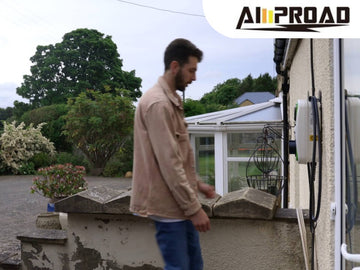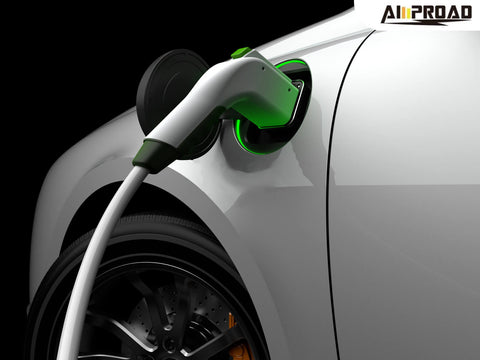
Electric Vehicle (EV) chargers, whether at home or in public spaces, play a crucial role in facilitating the adoption of electric vehicles and reducing reliance on fossil fuels. Home charging stations provide convenience and accessibility, allowing EV owners to recharge their vehicles overnight, minimizing reliance on public charging infrastructure. On the other hand, public charging stations offer flexibility for longer trips and serve as essential infrastructure for drivers without access to home charging solutions. However, to ensure optimal performance and safety, regular maintenance of EV chargers is essential. This includes inspecting cables for wear and tear, monitoring charging speeds, and updating software to address any potential vulnerabilities. By prioritizing maintenance, EV owners can prolong the lifespan of their chargers, minimize the risk of malfunctions, and ensure a reliable charging experience for themselves and other EV drivers.
Why Maintenance Matters for EV Chargers?
As the world transitions towards sustainable transportation, Electric Vehicle (EV) chargers serve as the backbone of the electric vehicle revolution, both at home and on the go. These charging stations are the lifelines that keep EVs powered, offering the convenience and reliability necessary for widespread adoption.
Critical Role of EV Chargers
EV chargers are more than just devices; they represent the infrastructure that supports the transition to cleaner, greener transportation. At home, they provide EV owners with the convenience of charging their vehicles overnight, ensuring they start each day with a full battery. Public charging stations, including Tesla destination charger, on the other hand, offer flexibility and peace of mind for longer journeys, enabling drivers to recharge their vehicles on the road. Without these vital charging points, the widespread adoption of electric vehicles would be hindered, limiting their accessibility and usability.
Silent Partners in the EV Ecosystem
Despite their importance, EV chargers often operate quietly in the background, earning them the title of "silent partners" in the EV ecosystem. Yet, just like any other piece of infrastructure, these chargers require regular maintenance to keep them functioning optimally. Regular upkeep ensures that they remain reliable, efficient, and safe for public use.
Importance of Regular Maintenance
Regular maintenance of EV chargers is essential to prevent malfunctions, ensure safety, and optimize performance. Routine inspections can identify potential issues such as worn-out cables, loose connections, or software glitches before they escalate into more significant problems. By addressing these issues promptly, maintenance helps minimize downtime and ensures a seamless charging experience for EV owners.
Optimizing the Charging Experience
Furthermore, maintenance plays a crucial role in optimizing the charging experience for EV drivers. Well-maintained chargers deliver consistent charging speeds, reducing wait times and maximizing convenience. They also offer peace of mind, knowing that their vehicle is receiving power safely and efficiently.
Ensuring Longevity and Reliability
In addition to enhancing the user experience, regular maintenance extends the lifespan of EV chargers, protecting the investment made in deploying this critical infrastructure. By conducting routine checks and implementing preventive measures, operators can prolong the operational life of chargers, reducing the need for costly repairs or replacements in the future.
Are There Hidden Benefits of Maintenance for Home and Public EV Chargers?
Maintenance for Electric Vehicle (EV) chargers goes beyond preventing breakdowns; it's essential for optimizing charging efficiency and ensuring safety for both home and public charging stations. By prioritizing maintenance, users can enjoy faster charging, save time and money, and mitigate the risk of electrical hazards.
Optimizing Charging Efficiency
For home EV chargers, regular maintenance is crucial for ensuring optimal performance, especially for Level 2 EV charger—the fastest home EV charger available. These chargers require proper upkeep to deliver the highest charging speeds consistently. Routine checks on cables, connectors, and software updates help maintain peak efficiency, minimizing charging times and maximizing convenience for EV owners.
In public charging stations, maintenance is equally vital to ensure reliable service for users. By keeping equipment in top condition, operators can offer faster charging speeds and reduce wait times, enhancing the overall experience for EV drivers. This optimization encourages the use of public charging infrastructure, supporting the growth of electric vehicle adoption.
Saving Time and Money
Efficient charging not only saves time but also translates into cost savings for EV owners. Faster charging means less time spent waiting for the battery to replenish, allowing users to get back on the road sooner. Moreover, optimizing charging efficiency can help reduce energy consumption, lowering electricity bills for home chargers and operational costs for public charging networks.
Ensuring Safety
Safety is paramount when it comes to EV charging, both at home and in public spaces. Regular maintenance plays a critical role in reducing the risk of electrical hazards associated with charging infrastructure. Inspections for wear and tear, proper grounding, and compliance with safety standards help mitigate the risk of shocks, fires, and other safety incidents.
In public charging stations, compliance with safety regulations is particularly important. Maintenance ensures that equipment meets safety standards set by regulatory authorities, protecting both users and operators from liability. This commitment to safety fosters trust among EV drivers, encouraging continued use of public charging infrastructure.
Thus, maintenance for home EV charger, including the Level 2 EV charger Canada and public EV charger offers hidden benefits that go beyond preventing breakdowns. By optimizing charging efficiency, maintenance saves time and money for users while ensuring the safety of both charging infrastructure and EV drivers. For home chargers, maintenance enables the fastest charging speeds, maximizing convenience for EV owners. In public charging stations, compliance with safety regulations ensures trust and reliability, supporting the growth of electric vehicle adoption. Therefore, prioritizing maintenance is essential for unlocking the full potential of EV charging infrastructure and driving the transition to sustainable transportation.
Your EV Charger Maintenance Checklist (Home & Public)
- Home: Present maintenance tasks in a clear, actionable way.
- Focus on easy-to-do checks like visual inspections and cleaning of the unit and surrounding area.
- Public: Emphasize the importance of contacting a qualified technician for professional inspections and software updates.
Future-Proofing Your Investment
Investing in Electric Vehicle (EV) chargers, whether for home or public use, is a significant commitment. However, by implementing regular maintenance practices, EV owners can future-proof their investment, extending the lifespan of their chargers and safeguarding against potential risks.
Extending Lifespan and Saving Costs
One of the key benefits of regular maintenance is the extension of the charger's lifespan. By conducting routine checks, addressing minor issues promptly, and implementing preventive measures, EV owners can prevent premature wear and tear on their chargers. This proactive approach not only ensures reliable performance but also reduces the need for costly repairs or replacements in the long run, saving both time and money.
For home EV charger, such as the fastest home EV charger available, maintenance can significantly enhance their longevity. Simple tasks like cleaning connectors, inspecting cables for damage, and updating firmware can help keep the charger operating smoothly for years to come. By staying ahead of maintenance needs, homeowners can avoid the inconvenience and expense of having to replace their chargers prematurely.
In public charging stations, where chargers are subjected to higher usage and external factors, maintenance is equally crucial. Preventative measures such as vandalism protection can help safeguard chargers against damage or tampering, ensuring uninterrupted service for EV drivers. Regular inspections and repairs also help address issues proactively, minimizing downtime and maximizing uptime for public charging networks.
Preventing Vandalism and Ensuring Continued Service
Vandalism protection is particularly important for public charging stations, where chargers are vulnerable to acts of vandalism or sabotage. Implementing measures such as sturdy enclosures, security cameras, and tamper-resistant hardware can deter would-be vandals and protect charging infrastructure from damage. By investing in preventative measures, operators can ensure the continued availability of charging services for EV drivers, promoting confidence and trust in the reliability of public charging networks.
Future-proofing your investment in EV chargers through regular maintenance is essential for maximizing longevity, reliability, and cost-effectiveness. By staying proactive with maintenance practices, EV owners can extend the lifespan of their chargers, saving on replacement costs and minimizing downtime. For public charging stations, preventative measures like vandalism protection are crucial for ensuring continued service and reliability. By prioritizing maintenance and investing in protective measures, stakeholders can future-proof their investment in EV charging infrastructure, supporting the growth and sustainability of electric transportation.
FAQs / People Also Ask
Q: How often should I perform maintenance on my home EV charger?
A: It's recommended to perform routine maintenance on your home EV charger at least once every six months. This includes inspecting cables, connectors, and software updates to ensure optimal performance and safety.
Q: What preventative measures can I take to protect my home EV charger from damage?
A: To protect your home EV charger from damage, consider installing a sturdy enclosure, using security cameras, and employing tamper-resistant hardware. These measures can help deter vandalism and ensure the continued reliability of your charging infrastructure.
Q: Are there any specific maintenance tasks I should perform for public EV chargers?
A: Public EV chargers require more frequent maintenance due to higher usage and exposure to external factors. Regular inspections, cleaning, and vandalism protection measures are essential to ensure continued service and reliability for EV drivers.
Q: How can regular maintenance help extend the lifespan of EV chargers?
A: Regular maintenance helps identify and address minor issues before they escalate into more significant problems, preventing premature wear and tear on EV chargers. By staying proactive with maintenance practices, EV owners can maximize the longevity and reliability of their charging infrastructure.
Q: What should I do if I notice any issues with my EV charger during maintenance checks?
A: If you notice any issues with your EV charger during maintenance checks, such as damaged cables or malfunctioning components, it's essential to address them promptly. Contacting a qualified technician or the manufacturer for repairs or replacements is recommended to ensure the continued safety and performance of your charging infrastructure.




